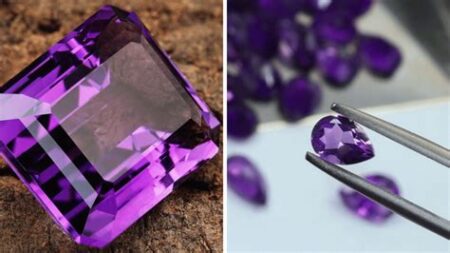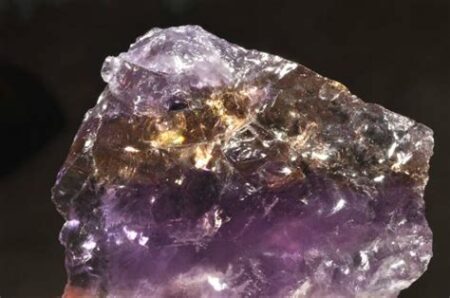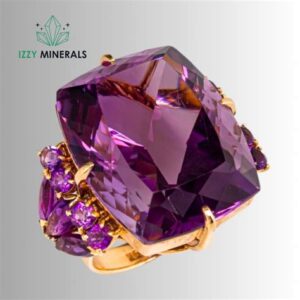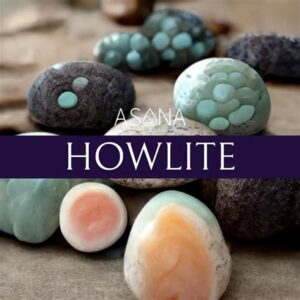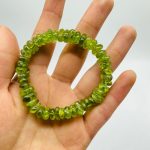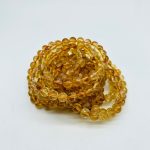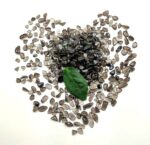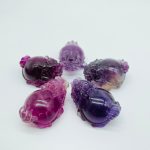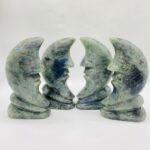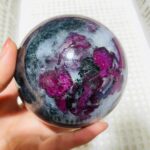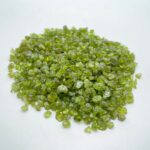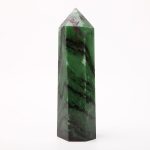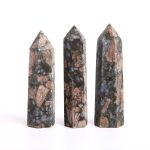Origin and Formation
Brown opal is a type of precious gemstone characterized by its distinctive brownish hue, which ranges from light caramel to deep chocolate brown. It primarily forms in sedimentary deposits rich in silica, typically within volcanic rocks or in association with iron oxide minerals. The gemstone’s brown coloration is attributed to the presence of iron impurities within its silica matrix.

Mineralogy and Properties
Brown opal belongs to the mineral group known as silica minerals, which also includes quartz and agate. It has a chemical formula of SiO2·nH2O, indicating its composition of silicon dioxide (SiO2) with varying amounts of water (H2O) molecules. Its hardness on the Mohs scale ranges from 5.5 to 6.5, making it moderately durable for jewelry applications.
Geographical Occurrence
Brown opal is found in various locations worldwide, with significant deposits occurring in Australia, the United States, and Mexico. The most renowned sources of brown opal include the Lightning Ridge and Winton regions in Queensland, Australia, which produce gemstones with exceptional color and clarity.
Historical Significance and Cultural Importance
Brown opal has been prized as a gemstone for centuries, with evidence of its use in jewelry and ornamental objects dating back to ancient times. The ancient Egyptians, Assyrians, and Romans all valued brown opal for its unique coloration and believed it possessed mystical properties. In the Victorian era, brown opal experienced a surge in popularity, becoming a fashionable gemstone for jewelry and decorative items.
Types and Variations
Brown opal can exhibit a wide range of variations in color, texture, and transparency. Some of the most prominent types include:
- Matrix Brown Opal: Embedded within a host rock, typically sandstone or ironstone.
- Jelly Opal: Translucent or semi-transparent with a waxy appearance.
- Boulder Opal: Found within ironstone nodules with a matrix of reddish-brown iron oxide.
Applications
Brown opal’s unique beauty and properties make it a versatile gemstone with diverse applications:
-
Jewelry: Brown opal is commonly used in jewelry, crafted into rings, earrings, pendants, and necklaces. Its warm, earthy tones complement a variety of metals, including gold, silver, and copper.
-
Ornamental Objects: Brown opal is incorporated into various decorative items, such as sculptures, vases, and ornamental boxes. Its distinctive coloration adds a touch of elegance and sophistication to any space.
-
Investment: Brown opal, particularly rare and high-quality specimens, can be a valuable investment. Its unique qualities and increasing popularity have led to a steady appreciation in its market value.
Evaluating Brown Opal
When evaluating brown opal, several factors determine its quality and value:
-
Color: The deeper and more intense the brown coloration, the higher the value of the stone. Opals with a fiery play-of-color, called “opalescence,” are particularly sought after.
-
Transparency: Transparent or semi-transparent opals allow light to penetrate and diffract, creating a mesmerizing play-of-color.
-
Carat Weight: As with other gemstones, the size of the brown opal in carats influences its value. Larger, well-formed specimens are more valuable than smaller stones.
-
Clarity: The presence of inclusions or imperfections can detract from the gemstone’s beauty and lower its value.
Tips and Tricks for Using Brown Opal
-
Cleaning: Brown opal can be cleaned using a mild soap solution and a soft brush. Avoid using harsh chemicals or ultrasonic cleaners, as they can damage the stone’s surface.
-
Storage: Store brown opal in a cool, dry place away from sources of heat or moisture. Wrap the stone in a soft cloth or store it in a jewelry box to prevent scratching or damage.
-
Wearing: When wearing brown opal jewelry, avoid exposing it to harsh chemicals, perfumes, or excessive heat. Remove the jewelry before engaging in strenuous activities to prevent chipping or breaking.
Common Mistakes to Avoid
-
Confusion with Other Gemstones: Brown opal can sometimes be mistaken for other brown gemstones, such as chocolate diamonds or smoky quartz. Ensure you consult a qualified jeweler or gemologist to accurately identify the stone.
-
Exposure to Chemicals: Avoid exposing brown opal to harsh chemicals, as they can permanently damage its surface and affect its color.
-
Overexposure to Light: Prolonged exposure to bright light can cause brown opal to fade over time. Store the gemstone in a dark place when not in use to preserve its color.
FAQs
-
What is the difference between brown opal and black opal?
– Black opal is a rare and highly valuable variety of opal characterized by its dark, almost black body color and vivid play-of-color. Brown opal, on the other hand, typically exhibits a lighter brown hue and a more subdued play-of-color. -
What are the benefits of wearing brown opal jewelry?
– Some cultures believe that brown opal promotes emotional balance, grounding, and self-confidence. It is also said to enhance creativity and imagination. -
How can I determine the authenticity of brown opal?
– Several methods can be used to verify the authenticity of brown opal, including comparing its appearance to known genuine specimens, checking its hardness and specific gravity, and utilizing gemological equipment such as a refractometer or spectroscope. -
What is the price range of brown opal?
– The price of brown opal can vary significantly depending on its quality and size. Lower-quality specimens may cost around $10 per carat, while high-quality, well-formed opals can reach prices of over $100 per carat. -
Can I use brown opal for investment purposes?
– Brown opal, particularly rare and high-quality specimens, can be a valuable investment. Its unique beauty and increasing popularity have led to a steady appreciation in its market value. -
What are the best ways to store brown opal?
– Brown opal should be stored in a cool, dry place away from sources of heat or moisture. Wrap the stone in a soft cloth or store it in a jewelry box to prevent scratching or damage.
New Applications and Innovation
OpalTech: A novel fabrication method has emerged, utilizing brown opal’s unique structure to create innovative materials called “OpalTech.” These materials possess a photonic bandgap, which allows them to control the propagation of light and electromagnetic waves. Potential applications include optical devices, sensors, and high-efficiency solar cells.
Tables
Table 1: Physical Properties of Brown Opal
| Property | Value |
|---|---|
| Hardness | 5.5 – 6.5 |
| Density | 2.1 – 2.3 g/cm³ |
| Refractive Index | 1.45 – 1.50 |
| Color | Brown, ranging from light caramel to deep chocolate |
Table 2: Geographical Sources of Brown Opal
| Location | Known for |
|---|---|
| Lightning Ridge, Australia | Exceptional color and clarity |
| Winton, Australia | High-quality matrix brown opal |
| Coober Pedy, Australia | Boulder opals with reddish-brown matrix |
| Nevada, United States | Jelly opals with waxy appearance |
| Querétaro, Mexico | Brown opals with fiery play-of-color |
Table 3: Types of Brown Opal
| Type | Characteristics |
|---|---|
| Matrix Brown Opal | Embedded within a host rock |
| Jelly Opal | Translucent or semi-transparent with a waxy appearance |
| Boulder Opal | Found within ironstone nodules |
Table 4: Evaluation Factors for Brown Opal
| Factor | Criteria |
|---|---|
| Color | Deep, intense brown with fiery opalescence |
| Transparency | Transparent or semi-transparent |
| Carat Weight | Larger, well-formed specimens |
| Clarity | Minimal inclusions or imperfections |

